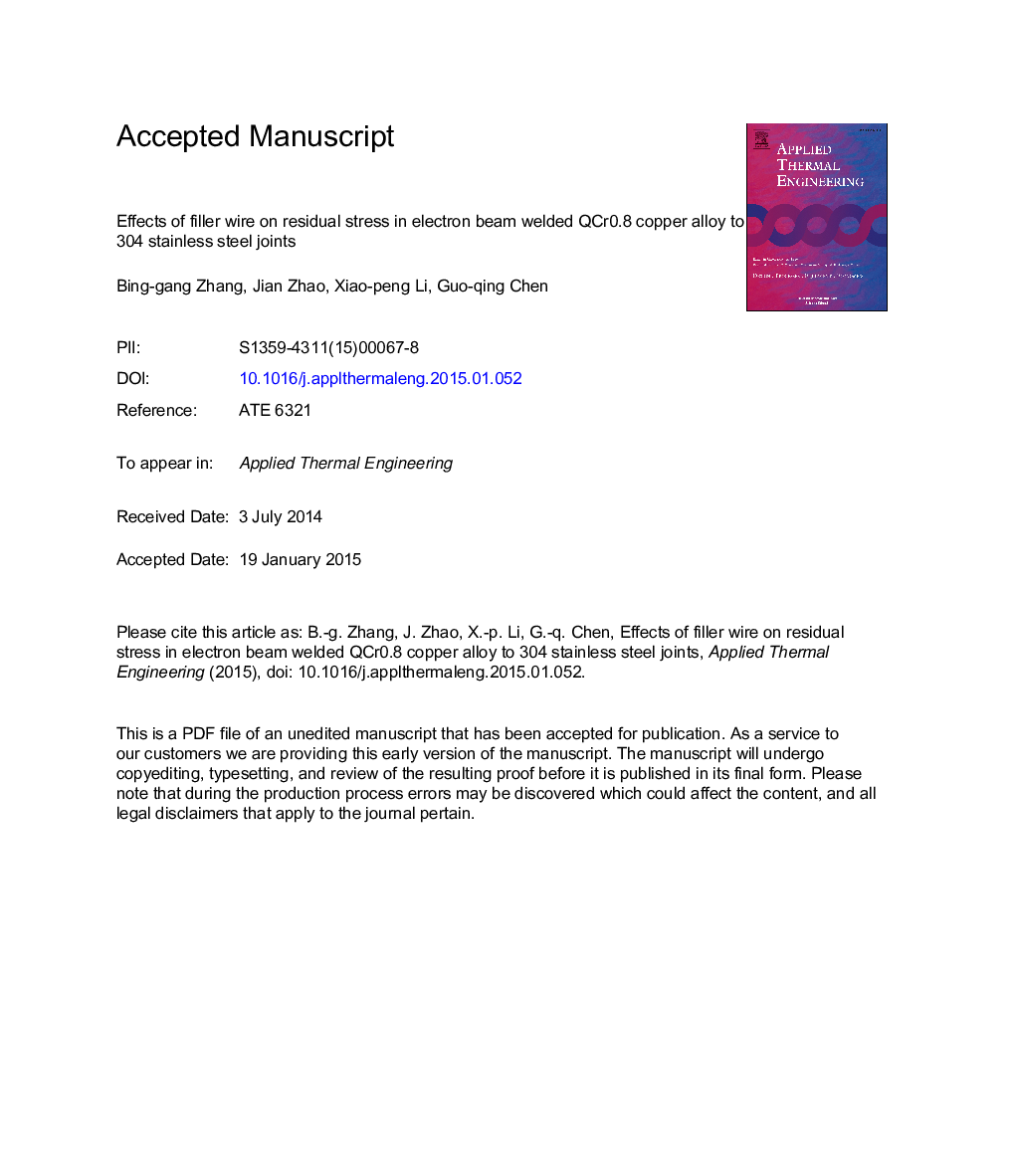| Article ID | Journal | Published Year | Pages | File Type |
|---|---|---|---|---|
| 645685 | Applied Thermal Engineering | 2015 | 19 Pages |
Abstract
The electron beam welding (EBW) of 304 stainless steel to QCr0.8 copper alloy with or without copper filler wire was studied in detail. The temperature fields and magnitude and distribution of stress fields in the joints during the welding process were numerically simulated using finite element method. The temperature cycles and residual stresses were also experimentally measured by thermometric and hole-drilling methods, respectively. The accuracy of the modeling procedure was verified by the good agreement between the calculated results and experimental data. The temperature distribution in the joint was found to be asymmetric along the center of weld. In particular, the temperature in the copper alloy plate is much higher than that in the 304 SS plate owing to the great difference in thermal conductivity between the two materials. The peak three-dimensional residual stresses all appeared at the interface between the copper and steel in the two different joints. Furthermore, the weld was subjected to tensile stress. The longitudinal residual stress, generally the most harmful to the integrity of the structure among the stress components in EBW with filler wire (EBFW), was 53Â MPa lower than that of autogenous EBW (AEBW), and the through-thickness residual stress was 12Â MPa lower. The transverse residual stress of EBFW was 44Â MPa higher than that of AEBW. However, analysis of the von Mises stress showed that the EBFW process effectively reduced the extent of the high residual stress region in the weld location and the magnitude of the residual stresses in the copper side compared with those of the AEBW joint.
Keywords
Related Topics
Physical Sciences and Engineering
Chemical Engineering
Fluid Flow and Transfer Processes
Authors
Bing-Gang Zhang, Jian Zhao, Xiao-Peng Li, Guo-Qing Chen,
